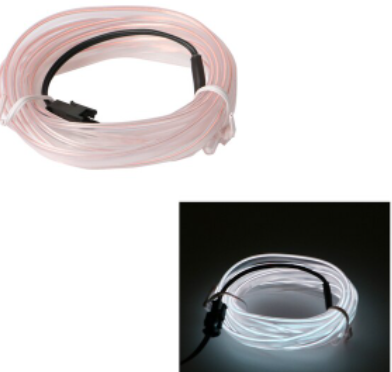Since Serena Williams’ last Grand Slamtitle at the Australian Open in 2017, 15 of 19 Slam winners have been 25 oryounger, and 11 were women no more than 23. The new world No. 1, Iga Swiatek,won’t be 21 until the end of this month.
However, most of that group failed toensconce themselves at the top of the sport: Jelena Ostapenko, BiancaAndreescu, Sofia Kenin and, especially, Garbiñe Muguruza and Naomi Osaka arestill threats, but all have Ping-Ponged up and down the rankings because ofinjuries and other struggles.
That opens the door to the Top 10 forthe next generation. But to reach the sport’s summit, these players mustaddress their weaknesses. However, as the American player Coco Gauff noted,“It’s tough to work on new things when you’re practicing during a tournamentbecause you don’t want to introduce something new just before a match.”
Marta Kostyuk and Amanda Anisimova saidthey skipped tournaments, sacrificing ranking points, to make time forpractice. “I have a good balance,” Anisimova said. “My game is a work inprogress, and it’s not a speedy process.”
Pam Shriver, an ESPN analyst and formerprofessional player, said that in the late fall, players out of contention forthe year-end WTA Finals would be well served by taking more time off. “Theyshould each do a major assessment after the US Open to see if they want to retoola few things,” she said.
They should learn to emulate Barty’swell-rounded game, said Martina Navratilova, a Tennis Channel analyst and themultiple Grand Slam winner. “She had variety in her shots and a Plan B or PlanC in every match,” Navratilova said. “You have to be able to hurt people inmore ways than one.”
Fortunately, said Rennae Stubbs, an ESPNanalyst and former professional player, the competitors’ youth allows time togrow: “Yes, there are things they can improve, but the great players from thepast all changed how they played as they got older and stronger.”
Here are seven players no older than 22and advice on how they could improve their games.
Emma Raducanu
Last year, Raducanu, 19, who is ranked12th, stunned the sport by winning the US Open. But instant stardom can createproblems, Navratilova said.
“She’s getting thrown too much into theworld outside tennis,” Navratilova said of distractions like social media. “Andagents often try to get the bucks while the player’s hot.”
Shriver, who reached a US Open final at16, can relate. “It changed my whole world,” she said. “It takes awhile to getresituated with your new identity and responsibilities.”
Coco Gauff
Gauff, 18, and ranked 18th, is workingon her footwork and on staying calm under pressure, “making sure I take my timebetween points,” she said.
Her elders prefer that she focus on herforehand. “It has gotten better, but it’s still the shot that goes off,”Navratilova said.
Stubbs blamed Gauff’s extreme forehandgrip, exacerbated by a long swing and not enough racket-head speed.
For an athlete of Gauff’s calibre, timemay provide the solution, Shriver said. “When you’re still growing into yourbody, it’s not easy to always have the same contact point on shots,” she said,“so some of this will change when Coco settles into her frame.”
Leylah Fernandez
Her top priority, Shriver said, shouldbe building up durability and strength: “She needs a strong core to withstand thepower of the top players but also the week-in, week-out playing.”
As a lefty, Fernandez, 19, and ranked17th, must also use her cross-court forehand to pull players off the court ontheir backhand side, Shriver said, and earn more free points on her serve,Stubbs added. “Her service motion could get a little more fluid,” Stubbs said.“It gets a little discombobulated.”
Amanda Anisimova
Anisimova, 20, and ranked 33rd, has theshots to be a champion, Navratilova said, but must move forward and take ballsearlier. “She hits a big shot to the corner, but is still 6 feet behind thebaseline,” Navratilova said. “She needs to step in and take advantage.”
Shriver said players like MariaSharapova improved their speed and quickness through training. Anisimova is onboard: “I’m most focused on my movement and becoming a better athlete, and Ithink it’s improved a lot over the last couple of months.”
Marketa Vondrousova
For Vondrousova, 22, and ranked 35th,it’s about mental growth more than specific shots. “She’s very talented and hasgreat variety in her shots, but sometimes she gets down on herself mentally,”Stubbs said.
Her lack of fire could just be naturalreserve, Shriver said, but to prove doubters wrong, Vondrousova must display akiller instinct in rallies: “She has a good lefty forehand, but needs to makeit an intimidating weapon.”
Clara Tauson
“She has the world at her feet, butneeds to get her fitness level up there,” said Stubbs, who expects big thingsas Tauson, 19, becomes more comfortable on the tour: “If she can get quicker,she won’t have to always hit the big shot.”
Shriver said Tauson, who is ranked 43rd,had game-changing power but sometimes lacked intensity: “Maybe she’s just shy,but sometimes it feels like she’s not fully engaged. I’d like to see somepassion on the court.”
Marta Kostyuk
With her father still in Ukraine, thisKyiv native has bigger things on her mind. “Most important is that she getshelp dealing with this trauma, because it’s going to be in her life,” Shriver said,adding that Kostyuk, 19, must be patient with her tennis game for now.
Kostyuk, who is ranked 58th, said thatin addition to working on her shot selection during rallies, she was mostfocused on “staying in the present.”
However, even without the horrors in herhomeland, that is not easy to work on in practice. “It is a big part of it,”Kostyuk said, “but these are abstract ideas, so it’s not like just working onyour down-the-line backhand.”
© 2022 The New York Times Company




